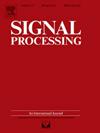Open set recognition of radar specific emitter based on adversarial reciprocal point learning
IF 3.4
2区 工程技术
Q2 ENGINEERING, ELECTRICAL & ELECTRONIC
引用次数: 0
Abstract
Radar specific emitter identification (SEI) is a key technology in electromagnetic spectrum control. Although the emergence of deep learning has promoted the development of SEI, there are still many shortcomings in the current research results. Most of the traditional deep learning algorithms are applicable to closed-set identification and can only be used when the database is complete. In addition, individual differences in radar signals are susceptible to noise interference, but traditional denoising methods are usually independent of the feature extraction process, making it difficult to ensure that certain individual information is not lost. Therefore, in this paper, we propose a new radar emitter open set recognition method called adversarial reciprocal point learning with adaptive denoising (ARPLAD). Firstly, we design a new feature extraction network for one-dimensional signals, which combines deep residual shrinkage network with efficient attention mechanism to autonomously denoise signals and focus on important parts of signal features. Secondly, we train the network using adversarial reciprocal point learning combined with center loss to extract discriminative features with compact intraclass distances and separable interclass distances, which can efficiently discriminate unknown signals and reduce the risk of open set identification. The experimental results show that ARPLAD exhibits excellent performance in different conditions, providing an effective solution for SEI in open electromagnetic environments.
基于对抗性倒易点学习的雷达特定辐射源开集识别
雷达特定辐射源识别是电磁波谱控制中的一项关键技术。虽然深度学习的出现促进了SEI的发展,但目前的研究成果仍存在许多不足。传统的深度学习算法大多适用于闭集识别,只有在数据库完备的情况下才能使用。此外,雷达信号的个体差异容易受到噪声干扰,而传统的去噪方法通常独立于特征提取过程,难以保证某些个体信息不丢失。因此,本文提出了一种新的雷达辐射源开集识别方法——对抗倒易点学习自适应去噪(ARPLAD)。首先,我们设计了一种新的一维信号特征提取网络,该网络将深度残差收缩网络与有效的注意机制相结合,对信号进行自主去噪,聚焦信号特征的重要部分;其次,采用对抗互易点学习和中心损失相结合的方法对网络进行训练,提取类内距离紧凑、类间距离可分离的判别特征,有效地判别未知信号,降低了开放集识别的风险;实验结果表明,ARPLAD在不同条件下均表现出优异的性能,为开放电磁环境下的SEI提供了有效的解决方案。
本文章由计算机程序翻译,如有差异,请以英文原文为准。
求助全文
约1分钟内获得全文
求助全文
来源期刊

Signal Processing
工程技术-工程:电子与电气
CiteScore
9.20
自引率
9.10%
发文量
309
审稿时长
41 days
期刊介绍:
Signal Processing incorporates all aspects of the theory and practice of signal processing. It features original research work, tutorial and review articles, and accounts of practical developments. It is intended for a rapid dissemination of knowledge and experience to engineers and scientists working in the research, development or practical application of signal processing.
Subject areas covered by the journal include: Signal Theory; Stochastic Processes; Detection and Estimation; Spectral Analysis; Filtering; Signal Processing Systems; Software Developments; Image Processing; Pattern Recognition; Optical Signal Processing; Digital Signal Processing; Multi-dimensional Signal Processing; Communication Signal Processing; Biomedical Signal Processing; Geophysical and Astrophysical Signal Processing; Earth Resources Signal Processing; Acoustic and Vibration Signal Processing; Data Processing; Remote Sensing; Signal Processing Technology; Radar Signal Processing; Sonar Signal Processing; Industrial Applications; New Applications.
 求助内容:
求助内容: 应助结果提醒方式:
应助结果提醒方式:


